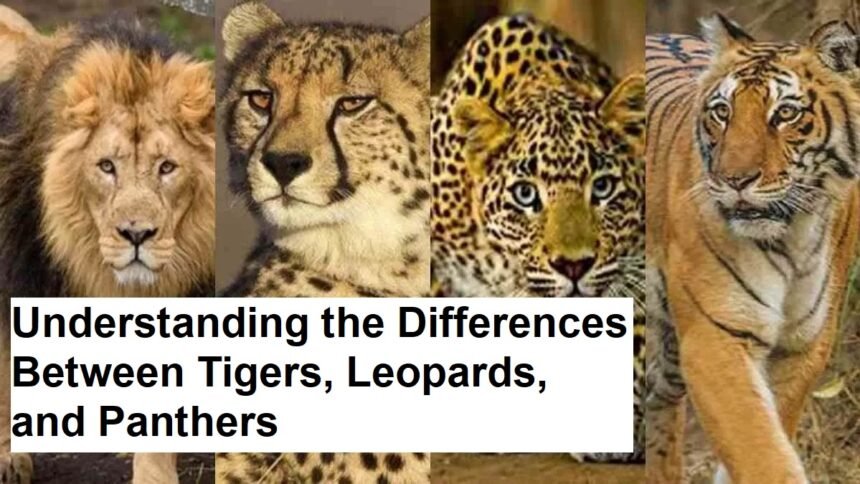Introduction
The big cat family is renowned for its majestic presence and fierce nature, captivating human imagination for centuries. Among the most iconic members are tigers, panthers, and leopards. While these names often get intertwined in popular culture and sometimes used interchangeably, they are actually distinct species or subspecies with notable differences. Understanding these differences can deepen our appreciation for these incredible creatures and the diversity within the felid family.
Tigers: The Largest of the Big Cats
Tigers (Panthera tigris) are the largest species among the big cats, known for their powerful build, striking orange coat with black stripes, and commanding presence. They are primarily found in Asia, with species distributed across countries such as India, Russia, and Southeast Asian nations. Tigers are solitary animals, preferring vast territories where they hunt for large prey like deer and boars.
There are several subspecies of tigers, including the Bengal tiger, Siberian tiger, and Indochinese tiger, each adapted to different environments. The Siberian tiger, also known as the Amur tiger, is the largest, with remarkable adaptations for cold climates. Tigers are renowned for their strength, agility, and stunning striped pattern, which provides camouflage in forested habitats.
Panthers: A General Term for Dark-Coated Big Cats
The term “panther” is often used broadly and somewhat confusingly. It is not a specific species but generally refers to big cats with melanistic (black) coats. Melanism is a genetic mutation that results in an excess of dark pigmentation. Therefore, when people say “black panther,” they are typically referring to melanistic individuals of either leopards or jaguars.
- Black Jaguars: Found primarily in Central and South America, jaguars are part of the Panthera genus. Melanistic jaguars are often called black panthers, but they retain their characteristic rosette-shaped markings upon close inspection.
- Black Leopards: Also known as panthera pardus fusca, these are found mainly in Africa and parts of Asia. Their melanism makes them appear entirely black, but faint rosette patterns are sometimes visible.
So, in essence, “panther” is a colloquial term used for melanistic big cats rather than a separate species. They are known for their stealth and adaptability across various environments.
Leopards: The Sleek and Adaptable Cats
Leopards (Panthera pardus) are smaller than tigers but equally formidable predators. Recognizable by their golden-yellow coat covered in dark rosette-shaped spots, leopards are among the most adaptable big cats, thriving in a wide range of habitats—savannahs, forests, mountains, and even urban areas.
Leopards are solitary hunters, known for their strength and ability to carry prey much heavier than themselves into trees for safekeeping. Their spotted pelts provide excellent camouflage, allowing them to stalk prey with stealth and precision. In some regions, leopards exhibit melanism, resulting in the black variants often called panthers.
Summary
While tigers, leopards, and panthers often share similar habitats and hunting behaviors, their differences in size, appearance, and geographical distribution set them apart. The term “panther” is a bit misleading as it refers to melanistic variants of leopards and jaguars rather than a distinct species. Recognizing these distinctions enhances our appreciation of these magnificent creatures and highlights the importance of conserving their diverse habitats.












